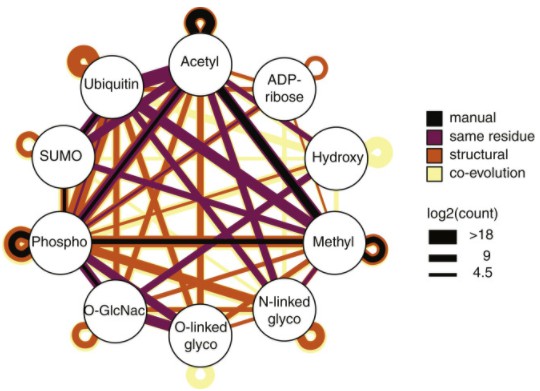 Fig. 1 Predicted PTM crosstalk. (Leutert, M., et al, 2021)
Fig. 1 Predicted PTM crosstalk. (Leutert, M., et al, 2021)
As the analysis of PTM progressed, researchers have discovered the importance of PTM not only in single independent events, but also in a coordinated manner across the diverse and rich cross-talk of PTMs. As a leading custom service provider of PTM analysis, Creative Proteomics now offers protein PTM crosstalk prediction service. Based on the advanced bioinformatics tools and adapted databases and methods, we are able to compute and classify functional associations between different PTMs and predict crosstalk, facilitating the understanding of how interactions between PTMs relate to physiological or pathological states.
Overview of PTM corsstalk
 Fig. 2 Interaction mechanisms in PTM cross-talk. (Smith, L. E., & Rogowska-Wrzesinska, A, 2020)
Fig. 2 Interaction mechanisms in PTM cross-talk. (Smith, L. E., & Rogowska-Wrzesinska, A, 2020)
PTMs expand the function and diversity of proteins, thus increasing the complexity of the proteome. Proteins can be modified at multiple sites as well as by multiple types of PTMs. The combinatorial action of multiple PTMs on the same or on different proteins to obtain higher order regulation is called "crosstalk". PTM crosstalk is usually achieved by proximity interactions, either in sequence or three-dimensional (3D) structures or by inducing conformational changes. Although some progress has been made in crosstalk analysis, large-scale analysis of large numbers of PTMs and their interactions in complex system environments remains a significant challenge. Due to the limitations of mass spectrometry (MS)-based methods and current enrichment procedures, most PTM crosstalk studies focus on either a small subset of PTMs (usually 2 to 3) or a more complete characterization of PTMs on a single protein.
There are several characteristics of PTM crosstalk, as follows,
- PTM crosstalk is inherently two-fold, namely, it can be positive or negative.
- PTM crosstalk can occur in a variety of ways, including promoting addition or removal (positive crosstalk) and direct competition or indirect effects (negative crosstalk).
- Crosstalk can be linear or non-linear in behaviour.
- The modes of PTM crosstalk can be divided based on intra- or inter-protein crosstalk.
PTM crosstalk prediction service
The study of PTM crosstalk is highly relevant to trigger their role in biological processes. It is necessary to identify the biological context/networks in which PTM event functions combined to cross-talks relate to physiological or pathological states by computational prediction. To meet the increasing demand for PTM crosstalk analysis, we are now offering a PTM crosstalk prediction service. Our service is highly flexible and customized. Based on the target protein, we can collect and integrate large-scale data from different sources and perform a detailed bioinformatics analysis of the target protein interactors and their various PTM properties. Our team of experts can help researchers explore the following list,
- PTM positive crosstalk and negative crosstalk prediction.
- Intra- or inter-protein PTM crosstalk prediction.
- PTM crosstalk hotspot analysis. PTM crosstalk hotspot refers to a motif that contains ≥3 sites and more than two PTMs are competing for the same site, such as ≥3 negative crosstalk.
- Function enrichment analysis of individual PTMs and crosstalk.
For more information on our services, please use our contact form. Our professional staff looks forward to working with you on your next project.
Related services
References
- Smith, Lauren Elizabeth, and Adelina Rogowska-Wrzesinska. "The challenge of detecting modifications on proteins." Essays in Biochemistry 64.1 (2020): 135-153.
- Leutert, Mario, Samuel W. Entwisle, and Judit Villén. "Decoding post-translational modification crosstalk with proteomics." Molecular & Cellular Proteomics 20 (2021).
Our products and services are for research use only.


 Fig. 1 Predicted PTM crosstalk. (Leutert, M., et al, 2021)
Fig. 1 Predicted PTM crosstalk. (Leutert, M., et al, 2021) Fig. 2 Interaction mechanisms in PTM cross-talk. (Smith, L. E., & Rogowska-Wrzesinska, A, 2020)
Fig. 2 Interaction mechanisms in PTM cross-talk. (Smith, L. E., & Rogowska-Wrzesinska, A, 2020)
